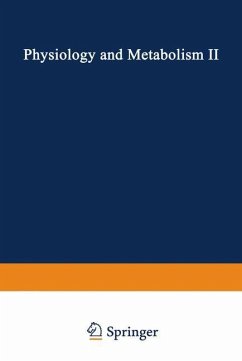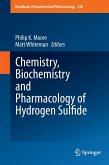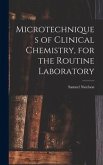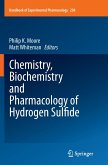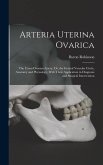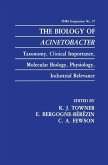The Bile Acids, Chemistry, Physiology, and Metabolism
Volume 2: Physiology and Metabolism
Herausgegeben:Nair, P.
The Bile Acids, Chemistry, Physiology, and Metabolism
Volume 2: Physiology and Metabolism
Herausgegeben:Nair, P.
- Broschiertes Buch
Andere Kunden interessierten sich auch für
![Chemistry, Biochemistry and Pharmacology of Hydrogen Sulfide Chemistry, Biochemistry and Pharmacology of Hydrogen Sulfide]() Chemistry, Biochemistry and Pharmacology of Hydrogen Sulfide149,99 €
Chemistry, Biochemistry and Pharmacology of Hydrogen Sulfide149,99 €![Microtechniques of Clinical Chemistry, for the Routine Laboratory Microtechniques of Clinical Chemistry, for the Routine Laboratory]() Samuel NatelsonMicrotechniques of Clinical Chemistry, for the Routine Laboratory40,99 €
Samuel NatelsonMicrotechniques of Clinical Chemistry, for the Routine Laboratory40,99 €![The Human Body; A Text-Book Of Anatomy, Physiology, And Hygiene; With Practical Exercises The Human Body; A Text-Book Of Anatomy, Physiology, And Hygiene; With Practical Exercises]() H. Newell MartinThe Human Body; A Text-Book Of Anatomy, Physiology, And Hygiene; With Practical Exercises28,99 €
H. Newell MartinThe Human Body; A Text-Book Of Anatomy, Physiology, And Hygiene; With Practical Exercises28,99 €![Chemistry, Biochemistry and Pharmacology of Hydrogen Sulfide Chemistry, Biochemistry and Pharmacology of Hydrogen Sulfide]() Chemistry, Biochemistry and Pharmacology of Hydrogen Sulfide149,99 €
Chemistry, Biochemistry and Pharmacology of Hydrogen Sulfide149,99 €![Arteria Uterina Ovarica: The Utero-Ovarian Artery, Or, the Genital Vascular Circle, Anatomy and Physiology, With Their Application in Diagnosis Arteria Uterina Ovarica: The Utero-Ovarian Artery, Or, the Genital Vascular Circle, Anatomy and Physiology, With Their Application in Diagnosis]() Byron RobinsonArteria Uterina Ovarica: The Utero-Ovarian Artery, Or, the Genital Vascular Circle, Anatomy and Physiology, With Their Application in Diagnosis33,99 €
Byron RobinsonArteria Uterina Ovarica: The Utero-Ovarian Artery, Or, the Genital Vascular Circle, Anatomy and Physiology, With Their Application in Diagnosis33,99 €![The Biology of Acinetobacter The Biology of Acinetobacter]() The Biology of Acinetobacter153,99 €
The Biology of Acinetobacter153,99 €![Principles Of Human Physiology, With Their Chief Applications To Psychology, Pathology, Therapeutics, Hygiène, And Forensic Medicine Principles Of Human Physiology, With Their Chief Applications To Psychology, Pathology, Therapeutics, Hygiène, And Forensic Medicine]() William B. CarpenterPrinciples Of Human Physiology, With Their Chief Applications To Psychology, Pathology, Therapeutics, Hygiène, And Forensic Medicine69,99 €
William B. CarpenterPrinciples Of Human Physiology, With Their Chief Applications To Psychology, Pathology, Therapeutics, Hygiène, And Forensic Medicine69,99 €-
-
-
Produktdetails
- Verlag: Springer / Springer US / Springer, Berlin
- Artikelnr. des Verlages: 978-1-4684-0900-0
- Softcover reprint of the original 1st ed. 1973
- Seitenzahl: 344
- Erscheinungstermin: 2. März 2012
- Englisch
- Abmessung: 229mm x 152mm x 19mm
- Gewicht: 499g
- ISBN-13: 9781468409000
- ISBN-10: 146840900X
- Artikelnr.: 39505848
Hinweis: Dieser Artikel kann nur an eine deutsche Lieferadresse ausgeliefert werden.
- Herstellerkennzeichnung
- Springer-Verlag GmbH
- Tiergartenstr. 17
- 69121 Heidelberg
- ProductSafety@springernature.com
1 Mechanisms of Bile Acid Biosynthesis.- I. Introduction.- II. Formation of Cholic Acid.- III. Formation of Chenodeoxycholic Acid.- IV. Formation of Other Primary Bile Acids.- V. Conjugation of Bile Acids.- VI. Regulation of Bile Acid Formation.- VII. Formation of Bile Salts in "Primitive" Animals.- References.- 2 Bile Salt Transport Systems.- I. Introduction.- II. Active Transport in the Intestine.- III. Passive Proximal Intestinal Absorption of Bile Salts.- IV. Passive Absorption of Bile Salts in the Lower Gastrointestinal Tract.- V. The Transport of Bile Salts in the Liver.- VI. Renal Transport of Bile Salts.- References.- 3 Bile Salt Metabolism in Man.- I. Introduction.- II. Primary Bile Salts in Man.- III. Pathways for Primary Bile Salt Formation in Man.- IV. Synthesis Rates.- V. Maximum Synthesis Rates.- VI. Relative Synthesis Rates in Liver Disease.- VII. Formation of Secondary Bile Acids in Man.- VIII. Amino Acid Conjugates.- IX. Sulfate Esters.- X. Altered Bile Salt Metabolism with Hepatobiliary Disorders.- XI. Disease Groups.- XII. Portal Cirrhosis.- XIII. Bile Duct Obstruction.- XIV. Hepatitis.- XV. Alcoholic Liver Injury.- XVI. Drug-Induced Jaundice.- XVII. Bile Salts and Pruritus.- XVIII. Pruritus and Pregnancy.- XIX. Lithocholic Acid and Liver Injury.- XX. Dissociated Jaundice.- XXI. Conjugation in Hepatobiliary Disorders.- XXII. Stagnant Loop Syndrome.- XXIII. Bile Salts and Target Cells.- XXIV. Excretion in Urine and Feces.- XXV. Feces.- XXVI. Enteroliths.- XXVII. Therapeutic Agents in Bile Salts.- XXVIII. Anion Exchange Resins.- XXIX. Antibiotics.- References.- 4 Newer Aspects of Bile Salt Metabolism in Intestinal Disease.- I. General Considerations of Experimental Methods Used in These Clinical Investigations.- II. Studies of EnterohepaticCirculation of Bile Salts in Patients with Diseases Primarily Involving the Distal Small Intestine.- III. Studies of Enterohepatic Circulation of Bile Salts in Patients with Diseases Primarily Involving the Proximal Small Intestine.- References.- 5 Bile Acids and the Intestinal Absorption of Fat and Electrolytes in Health and Disease.- I. Introduction.- II. Transport Function of Bile Acids During Fat Digestion and Absorption.- III. Influence of Bile Acids on Water and Electrolyte Transport in the Intestinal Tract 147.- References.- 6 Experimental Cholelithiasis.- I. Introduction.- II. Stasis and Infection.- III. Cholesterol Stones.- IV. Calcium Stones.- V. Vitamin A Deficiency.- VI. Conclusions.- References.- 7 Clinical Implications of Bile Acid Metabolism in Man.- I. Introduction.- II. Synthesis of Primary Bile Acids.- III. Enterohepatic Circulation of Bile Acids.- IV. Quantitation of Bile Acid Metabolism.- V. Physiological Functions of Bile Acids.- VI. Bile Salt Metabolism in Physiological Conditions.- VII. Bile Salt Metabolism in Clinical Conditions.- VIII. Drugs Affecting Bile Acid Excretion.- References.- 8 Effect of Hormones on Bile Acid Metabolism.- I. Introduction.- II. Thyroid Hormones.- III. Pituitary Hormones.- IV. Gonadal Hormones.- V. Adrenal Hormones.- VI. Conclusion.- References.- 9 Enzymes in Bile Acid Metabolism.- I. Introduction.- II. Formation of the Peptide Bond of Conjugated Bile Acids.- III. Peptide Bond Hydrolases of Bile Acid Conjugates.- IV. Hydroxysteroid Oxidoreductases and Related Enzymes.- V. Conclusion.- References.- 10 Action of Hypolipidemic Drugs on Bile Acid Metabolism.- I. Introduction.- II. Nicotinic Acid.- III. Neomycin.- IV. Ethyl p-Chlorophenoxyisobutyrate (Clofibrate, Atromid-S).- V. Cholestyramine.- VI. Other Compounds.- VII. Mitochondrial Oxidation of Cholesterol.- VIII. Conclusion.- References.- 11 Bile Acid Metabolism in Gnotobiotic Animals.- I. Introduction.- II. Studies of Cholesterol Catabolism to Bile Acids in Germfree Animals.- III. Bile Acid Pool Sizes, Turnover Rates, and Physiological Observations in Germfree versus Conventional Animals.- IV. State of Bile Acids in the Intestinal Lumen.- V. Quantitative Fecal Excretion of Bile Acids by Germfree and Conventional Animals.- VI. Qualitative Changes in Bile Acids as a Result of Microbiological Interaction.- VII. Conclusions.- References.- Note Added in Proof.- Author Index.
1 Mechanisms of Bile Acid Biosynthesis.- I. Introduction.- II. Formation of Cholic Acid.- III. Formation of Chenodeoxycholic Acid.- IV. Formation of Other Primary Bile Acids.- V. Conjugation of Bile Acids.- VI. Regulation of Bile Acid Formation.- VII. Formation of Bile Salts in "Primitive" Animals.- References.- 2 Bile Salt Transport Systems.- I. Introduction.- II. Active Transport in the Intestine.- III. Passive Proximal Intestinal Absorption of Bile Salts.- IV. Passive Absorption of Bile Salts in the Lower Gastrointestinal Tract.- V. The Transport of Bile Salts in the Liver.- VI. Renal Transport of Bile Salts.- References.- 3 Bile Salt Metabolism in Man.- I. Introduction.- II. Primary Bile Salts in Man.- III. Pathways for Primary Bile Salt Formation in Man.- IV. Synthesis Rates.- V. Maximum Synthesis Rates.- VI. Relative Synthesis Rates in Liver Disease.- VII. Formation of Secondary Bile Acids in Man.- VIII. Amino Acid Conjugates.- IX. Sulfate Esters.- X. Altered Bile Salt Metabolism with Hepatobiliary Disorders.- XI. Disease Groups.- XII. Portal Cirrhosis.- XIII. Bile Duct Obstruction.- XIV. Hepatitis.- XV. Alcoholic Liver Injury.- XVI. Drug-Induced Jaundice.- XVII. Bile Salts and Pruritus.- XVIII. Pruritus and Pregnancy.- XIX. Lithocholic Acid and Liver Injury.- XX. Dissociated Jaundice.- XXI. Conjugation in Hepatobiliary Disorders.- XXII. Stagnant Loop Syndrome.- XXIII. Bile Salts and Target Cells.- XXIV. Excretion in Urine and Feces.- XXV. Feces.- XXVI. Enteroliths.- XXVII. Therapeutic Agents in Bile Salts.- XXVIII. Anion Exchange Resins.- XXIX. Antibiotics.- References.- 4 Newer Aspects of Bile Salt Metabolism in Intestinal Disease.- I. General Considerations of Experimental Methods Used in These Clinical Investigations.- II. Studies of EnterohepaticCirculation of Bile Salts in Patients with Diseases Primarily Involving the Distal Small Intestine.- III. Studies of Enterohepatic Circulation of Bile Salts in Patients with Diseases Primarily Involving the Proximal Small Intestine.- References.- 5 Bile Acids and the Intestinal Absorption of Fat and Electrolytes in Health and Disease.- I. Introduction.- II. Transport Function of Bile Acids During Fat Digestion and Absorption.- III. Influence of Bile Acids on Water and Electrolyte Transport in the Intestinal Tract 147.- References.- 6 Experimental Cholelithiasis.- I. Introduction.- II. Stasis and Infection.- III. Cholesterol Stones.- IV. Calcium Stones.- V. Vitamin A Deficiency.- VI. Conclusions.- References.- 7 Clinical Implications of Bile Acid Metabolism in Man.- I. Introduction.- II. Synthesis of Primary Bile Acids.- III. Enterohepatic Circulation of Bile Acids.- IV. Quantitation of Bile Acid Metabolism.- V. Physiological Functions of Bile Acids.- VI. Bile Salt Metabolism in Physiological Conditions.- VII. Bile Salt Metabolism in Clinical Conditions.- VIII. Drugs Affecting Bile Acid Excretion.- References.- 8 Effect of Hormones on Bile Acid Metabolism.- I. Introduction.- II. Thyroid Hormones.- III. Pituitary Hormones.- IV. Gonadal Hormones.- V. Adrenal Hormones.- VI. Conclusion.- References.- 9 Enzymes in Bile Acid Metabolism.- I. Introduction.- II. Formation of the Peptide Bond of Conjugated Bile Acids.- III. Peptide Bond Hydrolases of Bile Acid Conjugates.- IV. Hydroxysteroid Oxidoreductases and Related Enzymes.- V. Conclusion.- References.- 10 Action of Hypolipidemic Drugs on Bile Acid Metabolism.- I. Introduction.- II. Nicotinic Acid.- III. Neomycin.- IV. Ethyl p-Chlorophenoxyisobutyrate (Clofibrate, Atromid-S).- V. Cholestyramine.- VI. Other Compounds.- VII. Mitochondrial Oxidation of Cholesterol.- VIII. Conclusion.- References.- 11 Bile Acid Metabolism in Gnotobiotic Animals.- I. Introduction.- II. Studies of Cholesterol Catabolism to Bile Acids in Germfree Animals.- III. Bile Acid Pool Sizes, Turnover Rates, and Physiological Observations in Germfree versus Conventional Animals.- IV. State of Bile Acids in the Intestinal Lumen.- V. Quantitative Fecal Excretion of Bile Acids by Germfree and Conventional Animals.- VI. Qualitative Changes in Bile Acids as a Result of Microbiological Interaction.- VII. Conclusions.- References.- Note Added in Proof.- Author Index.

